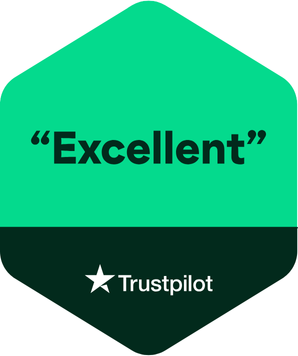Year 2 KS1 and Year 6 KS2 SATs scores explained
We’ve put together a handy guide to understanding SATs scores and answering your SATs results queries.

Many parents will be receiving information about their child’s SATs results over the coming weeks, so we’ve put together a handy guide to understanding the KS1 and KS2 SATs scores and answering your SATs results queries!
What do SATs results mean?
The purpose of SATs is to ensure that schools are accountable for children’s progress.
SATs are taken in year 2 (KS1) and year 6 (KS2) and scored on a scale of 80-100.
What does SATs stand for?
SATs is an acronym for Standard Assessment Tests. SATs are Standard Assessment Tests designed to find out if children are on track to meet the expected standards in English and maths as set out by the government.
KS1 results explained (Year 2 SATs results)
Although the KS1 tests are set externally, they are marked by teachers within the school. This year, children’s raw scores (the actual number of marks they get) will be translated into a scaled score. A test score of 100 or more means a child is working at the government expected standard, and a score below 100 indicates that a child hasn’t met the expected standard. The maximum score possible is 115, and the minimum is 85.
Teachers are given conversion tables to translate their pupils’ raw scores into scaled scores, which they’ll then use to inform their teacher assessment. This means the score that your child is given may not be just the result they achieved in their SATs but a score based on SATs results, classwork and the teacher’s observations.
To meet government expectations, pupils must achieve 100 in their scaled scores. But this equates to different marks for each paper (maths; reading; grammar, punctuation and spelling) and can change each year.
KS2 SATs results explained (Year 6 SATs results)
All papers children take for Key Stage 2 SATs are marked externally and the results are used to measure the school’s performance.
From 2016, National Curriculum levels were abolished and instead children will now receive a scaled score. Their raw score (the actual number of marks they get) will be translated into a scaled score. Tests are set each year to the same specification, but because questions must be different, the difficulty of tests may vary slightly each year. For this reason, raw scores are converted into scaled scores to ensure accurate comparisons of pupil performance over time.
A scaled score of 100 or more means a child is working at the expected standard – termed ‘AS’, while a score below 100 indicates that a child hasn’t reached the government expected standard – termed ‘NS’. The maximum score possible is 120, and the minimum is 80.
To meet government expectations, pupils must achieve 100 in their scaled scores. However, this equates to different marks for each paper (maths; reading; grammar, punctuation and spelling) and can change each school year.
What is a good SATs score: UK?
A ‘good’ score in the SATs is entirely down to the individual student and their goals and abilities. A good result will look different for everyone.
The highest score achievable for KS1 is 115, and for KS2 it is 120. If your child has achieved anything above 100, it means they have exceeded expectations.
What score is a pass in SATs?
The SATS pass mark or expected standard is 100. If a child scores below 85 (KS1) or 80 (KS2), it means they have not reached the expected standard.
When do the 2025 SATs Results come out?
KS1 SATs results are usually ready by the end of July. However, you will have to ask the school for the results.
KS2 provisional SATs results are received by the school by the end of July and are usually included in the end of term report.
How do you find 2025 SATs results?
Each individual school will decide how they give pupils’ results to parents.
For key stage 1 SATs it is unlikely that you’ll receive your child’s actual SATs score unless you ask for them, but you will be told whether your child is working at the expected standard as part of their end of KS1 report.
For key stage 2, many schools send a sheet of results home with the child’s end of term school report. Each child will receive confirmation of whether they achieved the national standard. (‘NS’ means the expected standard was not achieved; ‘AS’ means the expected standard was achieved). As a parent, you might be given your child’s scaled score or a code but you are unlikely to be told your child’s raw score.
Will the 2025 SATs results be used by secondary schools?
Secondary school teachers will be told the incoming pupils’ SATs scaled scores. The way these scores will be used will vary between schools; some will use scaled scores to set year 7 pupils in maths and English, others may use a combination of SATs results and year 7 CATs (Cognitive Ability Tests) or their own internal tests at the start of secondary school.
SATs Results Glossary
AS – Achieved expected standard
NS – Not achieved expected standard
A – Absent from test
M – Missing from test
GDS – Working at greater depth within the expected standard (writing)
EXS – Working at the expected standard
WTS – Working towards the expected standard
HNM- Not met the expected standard (reading and maths assessments)
PKG – Pre-key stage, growing development of the expected standard. Working at a level lower than expected
PKF – Pre-key stage, foundations for the expected standard. Working at a level that is significantly lower than the expected
BLW: Working below the pre-key stage standards (lowest level of attainment)
SATs and League Tables
The league tables for primary schools are based on a mix of each school’s progress scores of its pupils for expected standards in reading, writing assessments and maths.
SATs Format
English grammar, punctuation and spelling
Paper 1: Questions
Paper 2: Spelling
English reading
Reading Comprehension
Maths
Paper 1: Arithmetic
Paper 2: Reasoning
Paper 3: Reasoning
Looking for help with your child’s SATs journey?
Do you have more questions about your child's SATs scores? Or do you want to help your child on their SATs journey? We're here to help!
At Explore Learning we're here to help you understand every step of your child's educational journey. If you want to understand how SATs scores work our expert tutors are happy to explain that to you in your free trial and progress meetings.
If you want to give your child a head start with their SATs, why not try tuition? Whether you're looking for online tuition or centre tuition, we're here to help your child prepare for their SATs exams. So why not book a free trial today to find out how we can help?
SATs tuition from £114 / month
Cancel anytime
No joining fee
In centre or online
Memberships to suit you
Cancel anytime
No joining fee
In centre or online
Memberships to suit you
Cancel anytime
No joining fee
In centre or online
Memberships to suit you




